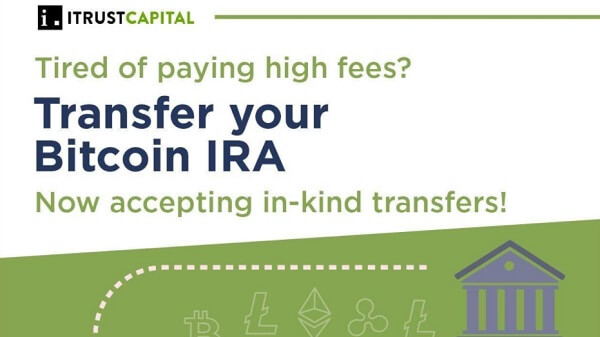Technically Capable Bitcoin Has Other Mass Adoption Challenges To Solve

Bitcoin (BTC)’s price may be wobbling at the moment, but the most popular cryptocurrency continues to attract a steady stream of interest from the wider world. Most recently, US-based payments giant NCR and digital asset management company NYDIG partnered to let around 24m customers of 650 US banks buy and sell BTC, while El Salvador is preparing to make the cryptocurrency legal tender in September.
This is all might be encouraging as far as adoption goes, but with bitcoin remaining relatively unproven as a large-scale means of payment it raises a thorny question: how much adoption and use can Bitcoin as a network actually accommodate?
According to a variety of Bitcoin experts, upgrades — such as SegWit — have expanded the platform’s capacity in recent years, while the maturation of the Lightning Network (LN) as a second-layer solution theoretically enables Bitcoin to handle an indefinite number of transactions per second. That said, many observers agree that the main adoption-related issue facing Bitcoin right now isn’t actually capacity and throughput, but rather usability.
Bitcoin is scaling by itself
According to developer Luke Dashjr, Bitcoin’s capacity isn’t as limited as the mainstream media, for instance, would have you believe.
“Following the activation of SegWit in 2017, Bitcoin does not have any maximum limit to transactions per second,” he told Cryptonews.com.
Other commentators agree that Bitcoin’s capabilities have expanded significantly post-SegWit. According to Blockstream researcher Christian Decker, Bitcoin’s capacity increases in parallel with a reduction in transaction size.
“Some time ago I came up with a direct comparison between pre-SegWit and post-SegWit. In this back-of-the-envelope calculation for optimal conditions (smallest possible transactions) SegWit nearly doubled the capacity of the network (from 5,200 [transactions]/block to 12,100 [transactions]/block) by optimizing how information is stored,” he said.
Decker added that this scenario is a bit optimistic, because it’s predicated on using the smallest possible transaction size. That said, upcoming upgrades — Schnorr signatures and Taproot — make it more realistic.
“However, with Taproot and Schnorr we can get closer to this optimistic scenario, by further compressing common scripts and reducing the size of multisig transactions to be identical to single-sig transactions,” he said.
Decker suggested that estimating a maximum number of transactions per second is not very informative, since it can vary quite widely depending on the nature of the transactions. Christopher Bendiksen, the head of research at CoinShares, also shares this view, while adding that Bitcoin is already capable enough to serve numerous useful purposes.
“In my opinion, the theoretical limit isn’t actually that interesting and is more or less an academic exercise that is highly dependent on assumptions on user behaviours that are often entirely unrealistic. Bitcoin clears a similar amount of daily transactions as competing systems like FedWire and the mempool [where all the valid transactions wait to be confirmed] regularly clears indicating a sufficient settlement transaction capacity,” he told Cryptonews.com.
Lightning Network to the rescue
In other words, Bitcoin is quite capable of accommodating a significant degree of adoption and use all by itself. Nonetheless, most agree that it needs help from layer-two solutions if it wants to become something like a nationwide or international payment system used regularly by thousands or millions of people.
“It’s of course important that on-chain transaction capacity keeps getting optimised, but it is layered solutions that enable Bitcoin adoption on a global commercial scale, as we’ve just observed in El Salvador,” said Bendiksen.
El Salvador is turning to the Lightning Network to make widespread bitcoin payments possible in the Latin American nation, with LN capable of a potentially infinite number of transactions per second.
“There is no transaction capacity on the Lightning network — it’s unlimited, infinitely surpassing the capacity of centralised layer-2 alternatives like Visa and MasterCard,” according to Bendiksen.
Others agree, although some note that there are still certain technical challenges which need to be overcome in order for LN to attain massive scale.
“The Lightning Network itself has no limit on transaction capacity. One possible limitation may be the requirement to open a payment channel and then manage the channel balance — but we already see emerging solutions such as batch channel management, channel factories, etc.,” said Josef Tětek, Satoshi Labs, the manufacturer of the Trezor wallet, brand ambassador.
Critics have suggested that the Lightning Network may tend towards centralization of payment channels. However, most contend that it’s the only viable way for Bitcoin to substantially expand its capacity, with Christian Decker explaining how it does this.
“The way Lightning achieves higher scale is by moving transactions off-chain, but keeping these off-chain contracts rooted and eventually settled on-chain. This means that rather than being a limit on the transfers, the blockspace limit now becomes a limit on the number of these off-chain contracts being created and settled,” he said.
Scalability isn’t an issue, usability is
It’s thanks to the Lightning Network that El Salvador was able to proceed with its plans to make Bitcoin legal tender, although it remains to be seen just how successful its embrace of the cryptocurrency will be.
However, for many experts and commentators, the issue isn’t really whether Bitcoin and/or the Lightning Network is technically capable of handling a massive number of transactions. Instead, it’s usability, with a level of experience and expertise still arguably being required to use Bitcoin with ease.
“This is likely a very personal opinion, but I do think that usability is our number one issue at the moment. The lack of easily accessible tools that abstract away the underlying complexity mean that we are limiting the reach of Bitcoin to tech-savvy people and enthusiasts that are willing to invest time to learn, and have the spare time to do so,” said Decker.
Luke Dashjr agrees, emphasizing the importance of users running their own nodes.
“Bitcoin only works with a supermajority of usage verified with the recipient’s own full nodes. Currently, the biggest hurdle to adoption is usability, in particular users willing to do what is needed to verify their own transactions,” he told Cryptonews.com.
The issue of usability could potentially result in a degree of centralization.
“The worst-case scenario is that most Bitcoin newcomers will opt for centralized custodial solutions (such as exchanges and their wallets) because they are easy to use. It is the responsibility of infrastructure developers to create understandable tools so that people aren’t afraid of using them,” said Josef Tětek.
Christopher Bendiksen also affirms that scalability and capacity isn’t really an issue for Bitcoin, and that the cryptocurrency has other fish to fry as far as adoption is concerned.
As he concludes, “The main obstacle at this point for bitcoin being used on a widespread basis as money is probably volatility, technological familiarity and in some regions, if usage is still low and users need to move in and out of their local fiat currencies, liquidity.”
___Learn more: – Solving These 7 Challenges Would Accelerate Bitcoin Adoption- El Salvador Will Be a Serious Test for Bitcoin’s Layer-2 Networks
– Imagine Bitcoin as a Reserve Asset. What Then?- Bitcoin Faces Hedge Test Amid Rising Inflation Concerns
– A Debt-Fuelled Economic Crisis & Bitcoin: What to Expect?- The Bitcoin Lightning Network Grows Even If You’ve Forgotten About It
– RSK is Bitcoin’s Fastest Growing Layer, Not Liquid nor Lightning- Bitcoin Mass Adoption Would Benefit and Harm Current Economy















